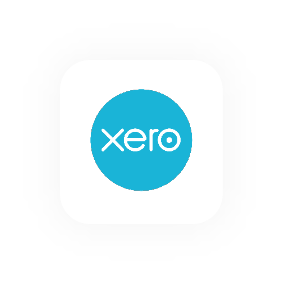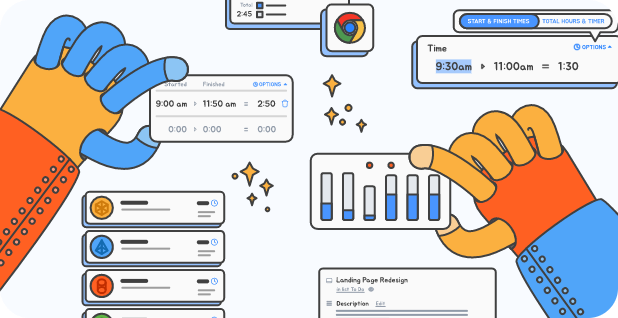Flat Rate vs Hourly
Flat Rate vs Hourly: What’s Better for Billing?
Choosing between a flat rate vs hourly billing structure might sound like a simple accounting decision—but it can completely reshape your business model, cash flow, client relationships, and even employee morale. Whether you’re a business owner running a service business, an auto mechanic, a freelancer, or part of a professional team, your billing method says a lot about how you value time, expertise, and efficiency.

In this guide, we’ll explore the pros and cons of both systems—flat rate pay and hourly pay—and examine how each affects productivity, profitability, and peace of mind.
What do flat rate and hourly pay mean?
Let’s start with the basics. A flat rate pay system rewards workers, contractors with a set price for a specific job, regardless of how long it takes. It’s also called a fixed rate or flat rate pricing model. For instance, a flat rate billing approach might charge $400 for a brake replacement job, even if the auto mechanic finishes in one hour or three.
By contrast, an hourly pay or hourly rate pay system compensates for the actual time spent on a project. Here, the total charge depends on an agreed-upon hourly rate multiplied by the number of hours worked.
Many industries use both structures. Automotive technicians, consultants, designers, and lawyers all grapple with the same question: which pricing structure creates the fairest outcome for both you and the client?
The flat rate system explained
A flat rate system is built on efficiency. The faster the worker completes a well defined scope of work, the more they can potentially earn. That’s why flat rate workers often thrive on above average productivity.
For example, if a shop owner assigns a flat rate work of three hours for a job that a skilled mechanic completes in two, the technician still earns the three-hour equivalent. That efficiency can translate to higher pay for fast, experienced professionals.
However, flat rate employees also take on risk: if the same job ends up taking five hours due to rusted bolts, missing parts, or warranty repairs, they still earn the same flat fees.
The upside
- Motivates efficiency: The more efficiently a worker performs, the greater the earning potential.
- Predictable costs for clients: Clients know the final selling price before work begins.
- Simplifies estimating: A set price reduces the back-and-forth over payment terms.
The downside
- Can discourage teamwork: When everyone's racing to complete their own ticket, collaboration may suffer.
- May create personal stress: Some workers feel pressured to rush jobs to maintain income.
- Can lead to less pay during slow periods: If fewer vehicles or projects come in, technicians have fewer opportunities to bill.
Still, many flat rate services rely on historical averages and industry standards to define fair times. These reference points—often published by car manufacturers or associations—ensure flat rate employees and shop owners align on expectations.
The hourly pay model explained
Under an hourly pay rate or hourly billing model, time literally equals money. This structure pays workers for each hour spent on the job, regardless of output. For employees, this means steady income, predictable hours, and less stress during downtime.
A technician working for hourly rate pay earns the same wage whether fixing five cars or two. That stability can offer constant employee income, which appeals to newer workers or those in industries with sporadic jobs.
The upside
- Fairness during long tasks: No one loses out when a job takes longer than expected.
- Predictable income: Workers receive weekly wages even during slow periods.
- Quality control: Without the rush to finish quickly, there's mroe focus on doing the job completed right the first time.
The downside
- Less incentive for efficiency: A fixed hourly wage can discourage productivity.
- Potential for over-billing: If the actual hours exceed the original estimate, clients may question value.
- Unpredictable costs for clients: Without a fixed price, projects can balloon beyond the business charges discussed.
Still, hourly invoicing remains common in professional fields where every task differs—such as consulting, design, or legal services—because it ensures all labor costs and material costs are accounted for transparently.
Real-world example: The auto mechanic dilemma
Few industries embody the flat rate vs hourly debate like automotive repair. Under the flat rate system, automotive technicians are paid according to book hours, not clock hours. If a service writer quotes four hours for a brake job and the auto mechanic completes it in two, they still get paid for four hours.
This model rewards speed and expertise. But it can create friction when warranty repairs or new vehicle warranties force technicians to work under manufacturer-set time limits that may not reflect reality.
Meanwhile, shop owners often favor flat rate billing because it simplifies pricing and stabilizes cash flow. Clients know the final selling price, and the billing process is streamlined. However, when work slows, flat rate employees may struggle to hit a minimum payment threshold—while those on hourly models continue earning steady income.
The role of productivity and stress
One of the biggest differentiators between flat and hourly rates lies in how they affect human motivation. Flat rate pay encourages speed and efficiency, which can lead to above average productivity but also personal stress.
By contrast, hourly rate pay fosters stability and balance but may fail to reward high performers adequately. Over time, this can lead to disengagement, especially for workers who take pride in completing a specific job more efficiently than their peers.
Business owners often try to blend both—offering flat rate pay for long term projects with well defined scopes, while retaining hourly pay for unpredictable work or sporadic jobs.
How each model impacts business operations
A. Cash flow and predictability
For small business owners, choosing the right billing system can make or break cash flow.
- Flat rate billing: Produces predictable invoices and easier forecasting. You can calculate profit margins by comparing direct costs, indirect costs, and labor rates against the set price.
- Hourly invoicing: Ties revenue directly to time, making income fluctuate depending on demand.
When clients prefer transparency, a flat rate pricing model offers peace of mind with clear payment terms and no surprises. But when projects vary in scope or complexity, an hourly rate billing approach ensures you’re compensated fairly for every minute.
B. Administrative simplicity
From a process standpoint, flat rate pay simplifies the billing process. You agree on a set price upfront—no need for detailed time sheets or time tracking systems.
However, for businesses that rely on hourly billing, accurate time tracking ensures accountability and compliance with industry standards. Tools like Hourly can streamline this by automatically logging time, calculating hourly pay, and generating invoices—reducing friction between employers and clients.
Psychological impact: Motivation vs stability
A less obvious distinction between flat rate vs hourly rate models lies in worker psychology.
- Flat rate pay system: Appeals to competitive, outcome-driven professionals. They see a direct correlation between effort, efficiency, and reward. However, in inconsistent markets, the lack of predictable income can create anxiety.
- Hourly rate pay system: Offers emotional security through steady income and predictable schedules—but may fail to inspire efficiency.
The ideal model depends on personality and context. Workers motivated by output thrive on flat rate pay, while those who value structure prefer hourly pay. Smart business owners recognize this and sometimes mix both systems within one company.
The client perspective: Perceived value and transparency
Clients care about fairness and clarity. They want confidence that the billing method reflects the perceived value they receive.
- Flat rate pricing: Clients appreciate knowing the final selling price before committing. It communicates confidence and expertise—especially for flat rate services like appliance repair, web design, or landscaping, where a well defined scope exists.
- Hourly fee: Clients paying an hourly rate appreciate flexibility. They understand that creative or diagnostic work (e.g., legal, consulting, or development) can’t always be accurately estimated.
In practice, many service businesses now use hybrid models—charging a flat rate for the base work and an hourly fee for extra revisions, maintenance, or consultation time. This combination builds trust and profitability.
Which pricing structure best fits long-term projects?
For long term projects, flat rate vs hourly decisions depend on scope predictability.
- A flat rate system works best when deliverables are fixed and outcomes measurable. This makes sense for flat rate work like a complete website build, audit, or installation.
- An hourly rate pay system suits projects that evolve, such as ongoing consulting or iterative design. Here, flexibility outweighs certainty.
The key is a clear pricing structure and payment terms that protect both you and your client. A transparent agreement—backed by detailed quotes and itemized labor costs—prevents disputes later.
Comparing outcomes: Profit margins, productivity, and risk
| Factor | Flat Rate Pay | Hourly Pay |
|---|---|---|
| Predictability for Clients | High (fixed price known upfront) | Low (depends on total hours) |
| Predictability for Workers | Low during slow periods | High (steady income) |
| Encourages Productivity | Yes (finish faster = higher pay) | Moderate to low |
| Administrative Simplicity | Easier billing process | Requires accurate time tracking |
| Risk for Worker | Higher (unpaid overtime possible) | Lower |
| Risk for Employer | Lower (profit margins pre-set) | Higher (uncertain total hours) |
| Best For | Repetitive, measurable jobs | Custom, variable projects |
For many organizations, the best answer isn’t “either/or.” Instead, blending both—based on project type, direct costs, and material costs—creates a balanced billing system that rewards efficiency without compromising fairness.
Industry standards and evolving expectations
Modern service businesses are moving toward hybrid approaches because clients now expect transparency, flexibility, and digital convenience.
In automotive repair, industry standards for labor rates guide shop owners and automotive technicians toward fair estimates. In creative or professional fields, clients often prefer hourly rate billing with capped estimates to maintain control over the final selling price.
Meanwhile, new software tools (like Hourly) make both models easier to manage—simplifying time tracking, payroll, and invoicing whether you choose flat rate or hourly.
Getting the best of both worlds
Increasingly, companies are merging flat rate and hourly pay approaches to suit modern work realities. For example:
- Base flat rate + hourly extensions: A flat rate system for the main deliverable, then hourly rate billing for change requests or overtime.
- Tiered billing systems: A set price for standard scope, shifting to hourly billing if the actual time exceeds limits.
- Performance bonuses: Rewarding above average productivity even in hourly models, preserving motivation.
This hybrid approach works especially well for service businesses managing long term projects with variable tasks. It also accommodates worker preferences—offering steady income while keeping efficiency incentives.
Choosing the right model
Ultimately, flat rate vs hourly isn’t about which is universally better—it’s about what aligns with your goals.
- If your projects have a well defined scope, a flat rate pay system can streamline your billing process, stabilize cash flow, and improve client confidence.
- If your work is unpredictable or creative, hourly pay ensures fairness for actual hours spent and protects your margins during revisions or troubleshooting.
Both models can work beautifully—provided you’re transparent with clients, use clear payment terms, and back your pricing with data.
For business owners and small business owners, the smartest approach may be to track data over time. Measure profit margins, review worker satisfaction, and adjust. Whether you lean toward flat rate pricing or hourly rate pay, the right billing method is the one that rewards efficiency, maintains fairness, and supports sustainable growth.














